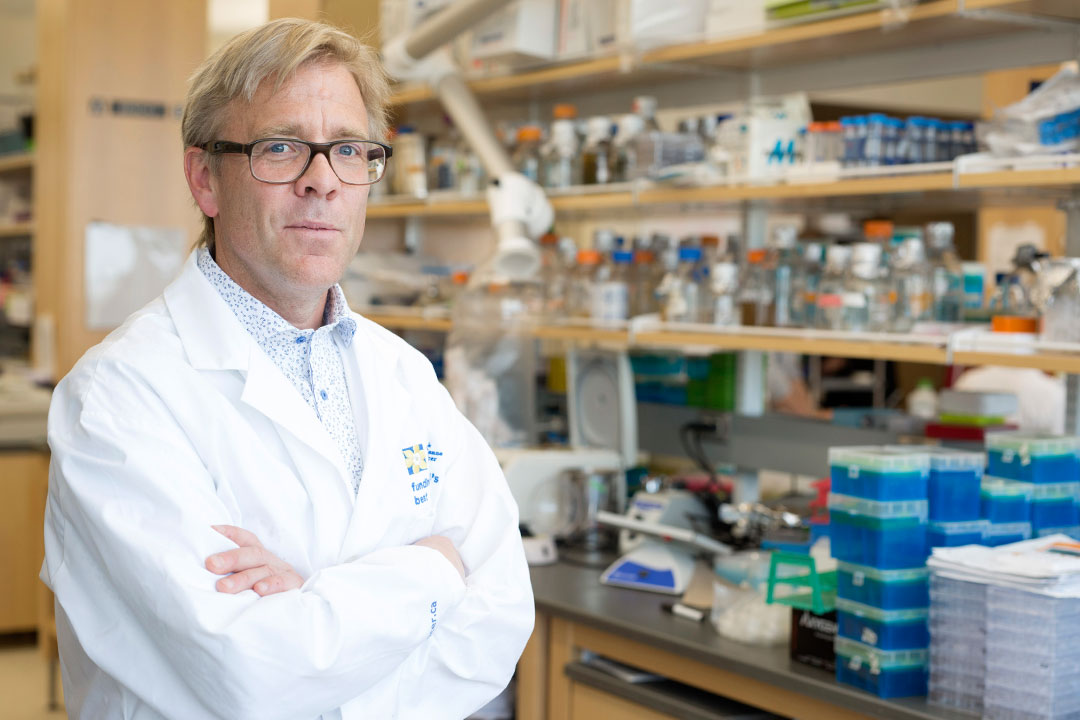
USask medical team receives $987,000 to test new imaging agents for improved cancer diagnosis
A University of Saskatchewan medical research team will receive $987,000 from Western Economic Diversification (WD) towards a $4.55-million project aimed at producing and testing new imaging agents for diagnosing lung and colorectal cancers in humans.
By USask Research Profile and ImpactThe federal investment will enable clinical development of first-of-their-kind imaging agents for molecular, non-invasive diagnosis and accurate tumor removal, potentially increasing the survival rate of cancer patients, said team leader and pathology professor Ron Geyer.
“We have developed and are evaluating in human subjects the safety and efficacy of nuclear imaging agents for whole body, non-invasive imaging of tumors and of optical imaging agents for image-guided surgical removal of tumors,” said Geyer.
“These imaging agents, specifically targeted to markers on cancer cells, will be used to plan treatments, diagnose and characterize cancers, and track their response to therapy in real-time.”
The optical imaging probes will be used to visually differentiate the tumor from adjacent healthy tissue during surgical intervention, enabling more effective and accurate tumor removal. This would significantly reduce tumor recurrence and enhance outcomes, he said.
The imaging agents will also be used to identify patients who will benefit from molecular-targeted therapies.
The university’s Saskatchewan Centre for Cyclotron Sciences, a state-of-the-art cyclotron facility managed by the Fedoruk Centre, will manufacture the imaging agent and the radioactive molecule used for nuclear imaging. The federal funding will enable the purchase of specialized digital imaging equipment to assist with the image-guided human surgery trials.
The team has established collaborations with the Centre for Molecular Immunology Centre (CIM) in Cuba and Innocimab / Innokeys Pte in Singapore, Licor Inc. in the U.S., as well as with the Clinical Trial Support Unit, a joint initiative of the USask College of Medicine, Saskatchewan Health Authority, and the Saskatchewan Cancer Agency.
The team expects to have preliminary results by December of 2019. The longer term goal is to obtain regulatory approval for the new molecular imaging agents and to establish a Saskatchewan-based company to market them.
The project will be carried out through the USask Centre for Biologic Imaging Research & Development (C-BIRD) which is developing the next generation of molecular imaging agents for cancer diagnostics. C-BIRD co-founders are Geyer and radiopharmacist Humphrey Fonge.
“This cutting-edge work, which may enable us to diagnose and treat even resistant tumors, is very exciting,” said Fonge, a USask assistant professor of medical imaging.
The announcement was made July 24 in Saskatoon by Canada’s Public Safety and Emergency Preparedness Minister Ralph Goodale.

Also announced was $650,880 from WD for the Summer Entrepreneurs (SE) program which was launched May 1 by Innovation Enterprise, USask’s commercialization unit. The investment is part of a $1.3-million program which involves several colleges and receives funding from public/private sector partners, as well as cash and in-kind services from IE.
The SE program is a new initiative to train, inspire and motivate the next generation of successful entrepreneurs, while bringing USask innovations to the world. Over the three years of the program, 72 new entrepreneurs will be trained.
Over the summer, 15 USask students have been hired to explore the commercial viability of five innovative USask technologies that are potentially suitable candidates for start-ups. With the support of the technology inventor, business mentors, and IE advisors, the student teams pinpoint the business opportunity, assess the market potential of their solution, and build a commercialization plan.
At the end of the summer, teams showing substantial and tangible market traction will receive the exclusive right (pending agreement on standard terms) to build their own business based on the technology.
“With this exciting initiative, we are bringing together various resources—vetted technologies, talent, experience, knowledge, and networks—to contribute to diversification and economic growth,” said IE Managing Director Johannes Dyring. “We’re tapping into the hidden talent we know exists on campus.”
For more information on the program and a complete list of SE funding partners, please see: https://research.usask.ca/innovation-enterprise/programs/summer_entrepreneurs.php

